In the market research industry there are two different forms of fatigue. Survey fatigue and respondent fatigue. Survey fatigue comes from complex/complicated questioning or just from the length of the survey. Respondent fatigue is typically caused by contacting respondents too frequently resulting in poor response rates or worse, complaints.
How does survey and respondent fatigue impact market research? Why is clean air important to breathe? For those of us in the market research world, respondents are the air for our research. No one wants to breathe dirty air, or worse have no air, or in our case poor or no respondents for our studies.
Survey and respondent fatigue can result in lower response rates (fewer members of your audience responding to your invites and clicking on the link for your survey) and you will see higher dropout rates (more respondents who start, but do not finish your survey). On the quality side, as you wear out respondents, the number of don’t knows or skipped questions will increase and you may see straight lining (when a respondents selects the same numbered choice over and over).
I have created the below guidelines based on my 20 years’ experience in the market research industry. I have designed and managed hundreds of projects, however the true basis for these guidelines come from my clients trusting me and seeing our success time and time again in managing their customer/audience lists for ongoing research efforts.
1. Limit the number of times you ask your audience to participate in research.
-
- I recommend only reaching out and asking for participation in a survey once every three months at most.
-
-
- Exception to this is for transactional surveys. If a member of your audience does something, let’s say signs up for a new service with you, this may trigger a short transactional survey as part of your program about the experience they just had. We do not count these towards the one survey every 3 months.
-
2. Inform your audience why you’re conducting the research in your invitation and/or in the opening of your survey.
-
- A compelling ask will pique the interest of some audience members and they will want to help you improve, as it may benefit them. They also may find it more interesting or trustworthy to know what you’re doing with their feedback.
3. Limit the length of your survey.
-
- Ask only the questions you need to ask in order to support your primary business objective(s)… get to the point; although it may seem better from a budget point of view to get the most out of every survey and solve for multiple needs, this will hurt your research in the long run.
- How long is too long?
- I do not have a magic number to share here. Different audiences accept different lengths and the better your survey is written, how good it looks and the more interactive it is, the longer your respondents will stay engaged.
- When surveying consumers, I try to keep my surveys 10-12 minutes, while in the B2B space, where respondents are often being paid more, I will stretch the length up to 20 minutes.
- Always test your surveys for timing by having a colleague unfamiliar with the survey take it and track the time. This will provide you with an accurate time it will take a potential respondent to complete your survey.
4. Make your survey interesting and easy to understand.
-
- Pre-testing surveys with a small number of the target audience and getting their feedback on the actual survey can be very valuable and well worth the additional time.
- Use skip logic to by-pass questions that are irrelevant to a particular respondent based on their previous answers or the type of audience they are responding from.
- Try to avoid having numerous taxing and time intense exercises in a single survey.
- Make any descriptions detailed, but to the point using general terms.
- Long aided or ranking lists and multiple open-ended questions are tiresome for respondents, try to use a good mix of question types.
5. Ensure your survey works and renders correctly on the screen.
-
- Internally test all logic and visuals.
- Run through the survey on multiple Internet browsers.
- Ensure the survey renders for various screen sizes and operating systems, as many respondents will take your survey on a smartphone or tablet.
- Create a ‘dummy’ data set as an additional check should your platform allow.
- Pre-tests come in handy here as well.
6. Thank them for their participation.
-
- Follow-up with a sincere and simple thank you.
- Share results that they may find interesting or show how they supported your organization/cause.
- Reward them with a gift or monetary payment.
7. Ask them if they’d like to participate in future research on this or a related topic.
-
- I like to keep record of who is willing to participate again, then in the case we need to reach out to dig deeper on the research topic or something related within that 3 month wait period, we can go to this group with less risk.
Overall, be respectful of your audience and put yourself in their position. Everyone is busy these days and even getting 5 minutes from someone can be difficult at times. Don’t ask for more than you need and don’t ask more often than you need to.
If you don’t manage for survey and respondent fatigue, you’ll end up having lower participation in your research studies over time and you’ll also end up with poor quality data. Keeping these guidelines in mind can ensure your research is sustainable and your data solid.


